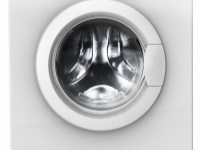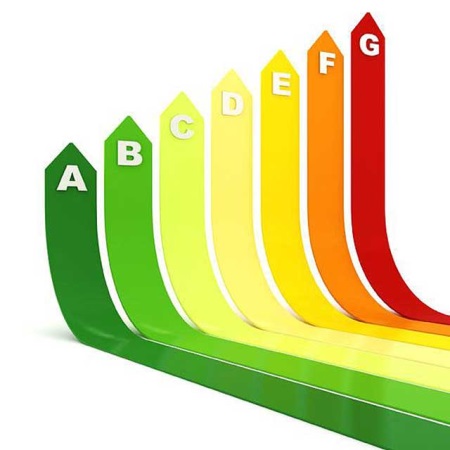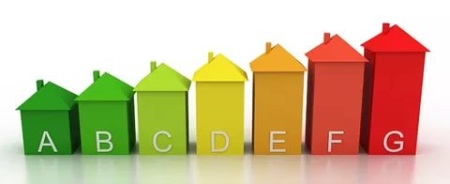Washing machine classes

Buying a washing machine is a responsible business. Clean, fresh laundry has always been an indicator of good taste, wealth. If previously the laundry often had to be washed by hand, now this responsibility rests with the washing machine. When choosing a washing machine, everyone looks at a number of qualities that will meet the needs of the family and save the budget. To make it easier for the consumer to navigate the market, a classification of washing machines has been introduced.
Washing machines are divided into 7 main classes: A, B, C, D, E, F and G.

Accordingly, the higher the class, the better the machine will wash. But the cost of the machine of the highest class will not always be higher: often the price is overpriced at the expense of an advertised brand.
Classes F and G are very rare, and you should not take them. Because the efficiency of washing in such machines is low. A higher class machines are not much more expensive, but their efficiency will be higher by several times.
Classification of washing machines
|
Classes |
Washing |
Quality index |
|
А |
Excellent |
1,3 |
|
В |
Very Good |
1-1,3 |
|
С |
Good |
0,97-1 |
|
D |
Normal |
0,94-0,97 |
|
E |
Satisfactory |
0,91-0,94 |
|
F |
Bad |
0,88-0,91 |
|
G |
Not at all bad |
0,88-0 |
The grades of washing machines are given for a reason. After all, stains on clothing can be of different origin, with one kind of fabric stain comes off well, and with another not. Therefore, it is customary to conduct tests to assign classes to washing machines.

The test compares the quality of washing in the tested washing machine with the washing in a reference machine. The same cloth with the same soiling is immersed in the washing machines. The wash lasts 1 hour at 60 C. The same detergent is used for washing. After washing, the fabrics are compared with a special dispenser. The automatic machine is used to avoid the influence of the human factor. According to the results, the washing machines will be assigned a class. The unit of washing quality is considered the efficiency index, which corresponds to its class.
The reference machine
In 1995, the very first reference washing machine appeared. Nowadays, only authorized manufacturers make such machines. These machines are undoubtedly efficient. But progress is moving forward - it is now possible to buy a washing machine that is better in performance than the reference machine.
A benchmark washing machine is not supposed to show the best performance, but a consistent performance. The uniquely low variation in performance is what makes it the benchmark for other washing machines.

Washing machine spin class
To determine the spin class of the washing machine is also tested. In the test, the laundry is weighed dry and after washing. The smaller the difference between the two, the better the washer will spin the laundry.
The following factors influence the quality of the spin:
- drum diameter;
- the number of revolutions of the washing machine;
- Spin cycle time;
- Variety of spinned fabric.

It is worth noting that a high spin class is not always beneficial. The more revolutions the machine makes, the more the fabric is traumatized during spinning. This should be taken into account when buying, especially if your closet has a lot of silk, knitwear, clothes made of delicate fabrics.
Power consumption class
Consumers look at this indicator even more often than the efficiency index of the washing machine. On average, in a family, the washing machine works up to 5-6 hours a week. In a month comes out about 20 hours. And energy costs, of course, everyone wants to reduce.
Recently, manufacturers have paid a lot of attention to this indicator. And if earlier washing machines were classified into seven groups by energy consumption, since 2002 they began to produce machines of class A+. This is the most economical option, which consumes 0.17 kWh/kg.

In order to assign a washing machine an energy class, tests are conducted. The washing machines are loaded with 1 kg of cotton laundry each. The laundry is washed for 1 hour at 60 C. At the end of the wash, the amount of energy used is counted. Depending on this indicator, the machine will be assigned an energy consumption class.
Every year, manufacturers come up with something new to reduce customers' energy costs. And in addition to machines of energy class A+, there are already automatic machines A++ and A?+++. These washing machines can reduce energy consumption by 10, 20, and even 30%.
What to pay attention to when buying?
The highest washing class corresponds to the highest-quality performance of a washing machine. Although you will hardly be able to notice the difference between washing classes A and B - it will be so insignificant. But the machines, the washing class of which is lower than C, you should not buy. The savings will be minimal, but it will affect the quality.
If we talk about spin classes, it is enough to use a C-class machine. It spins quite well, the laundry is fast enough to dry on a rope after spinning. Machines with a speed greater than 1200 often move, jump and vibrate when wringing. To avoid this you have to buy special feet or put some material underneath.

All the necessary information about the classification of the washing machine can be found on its body. All machines now have factory stickers that say what class it belongs to. If the machine does not have any classification marks on it, do not get upset. It means that the car is not meant for sale in European Union countries. Having the information, you can independently assign a class to the washing machine, looking at its technical specifications.
About what you need to consider when choosing a washing machine, see the program "Eldorado".




